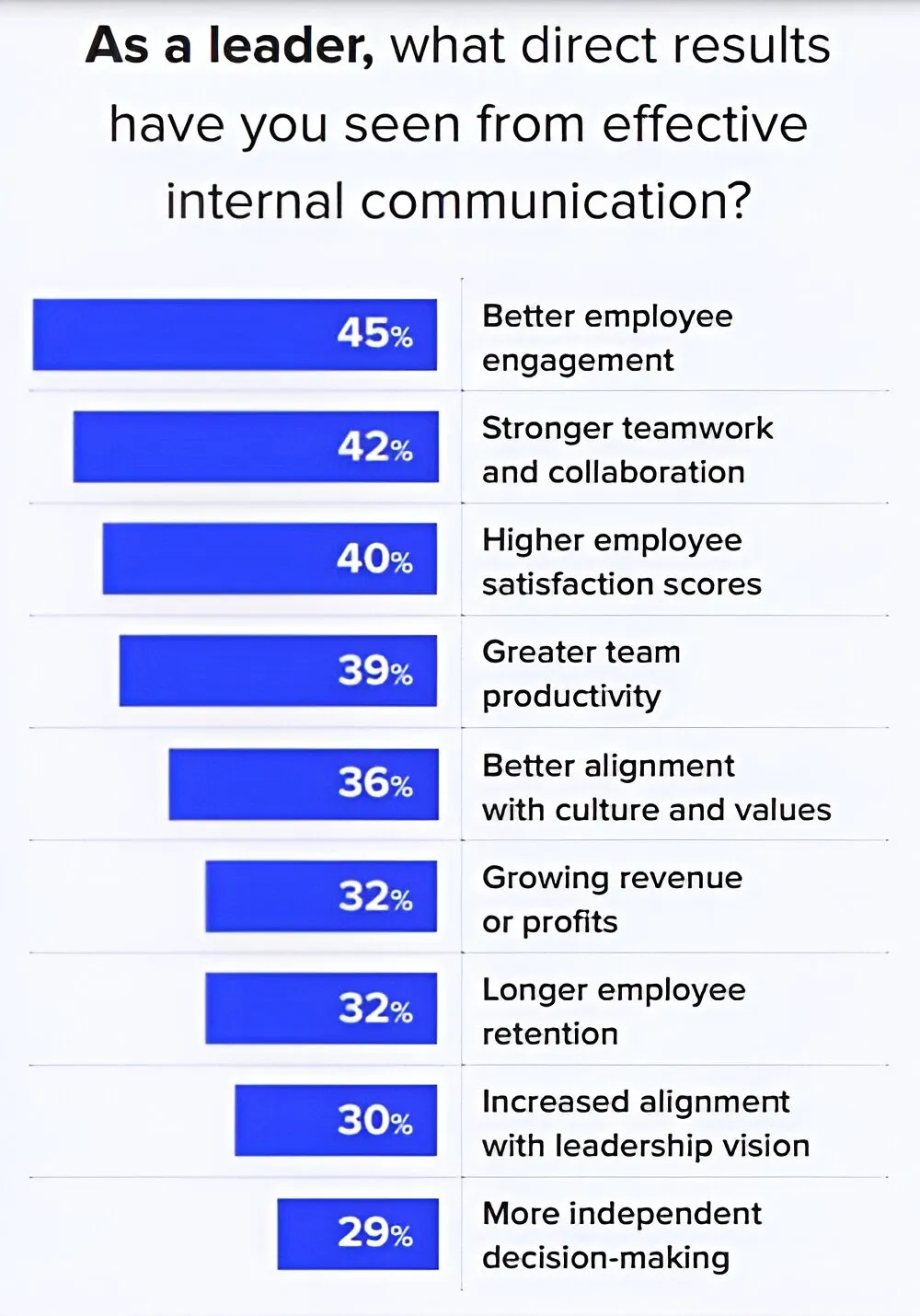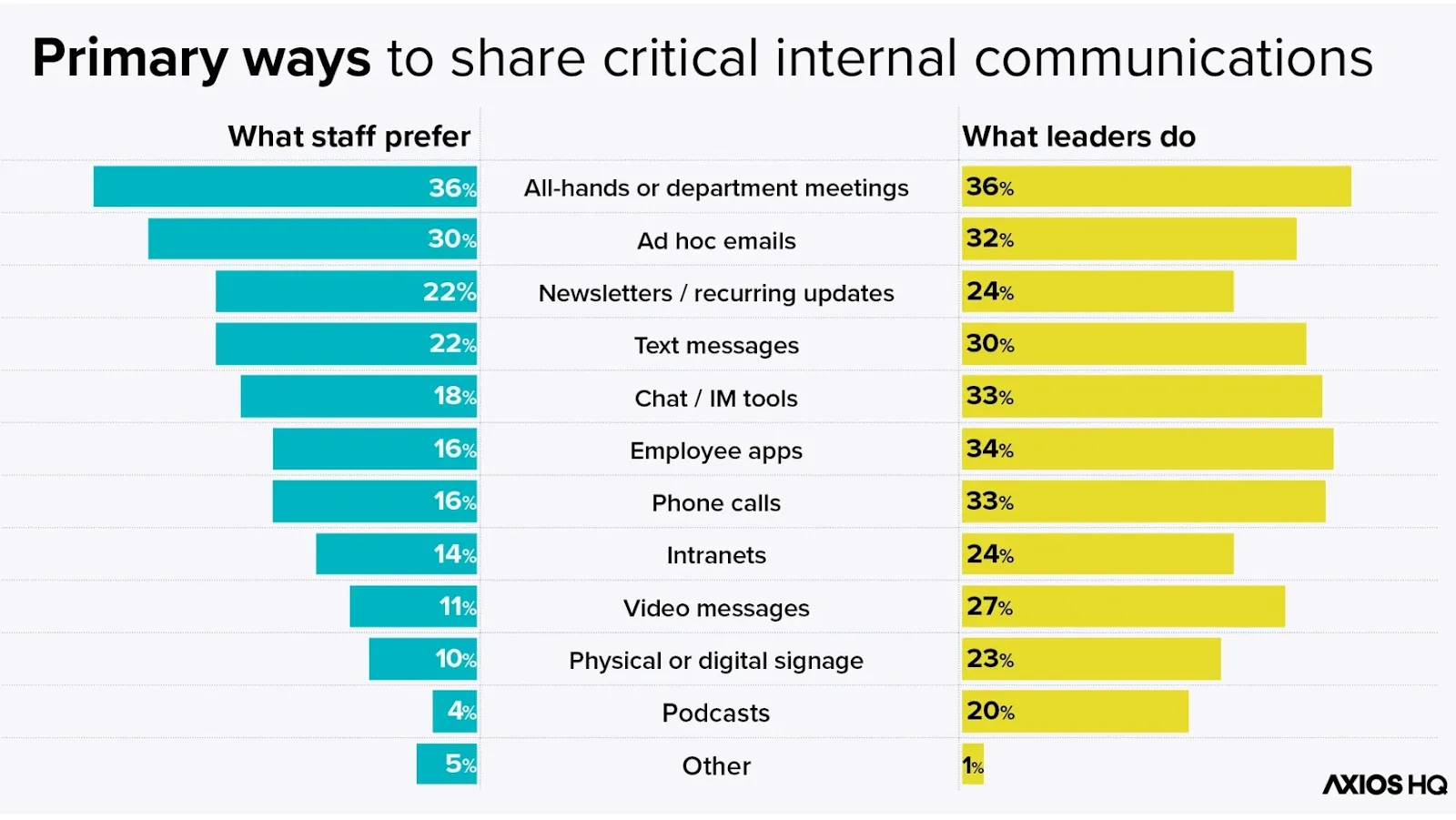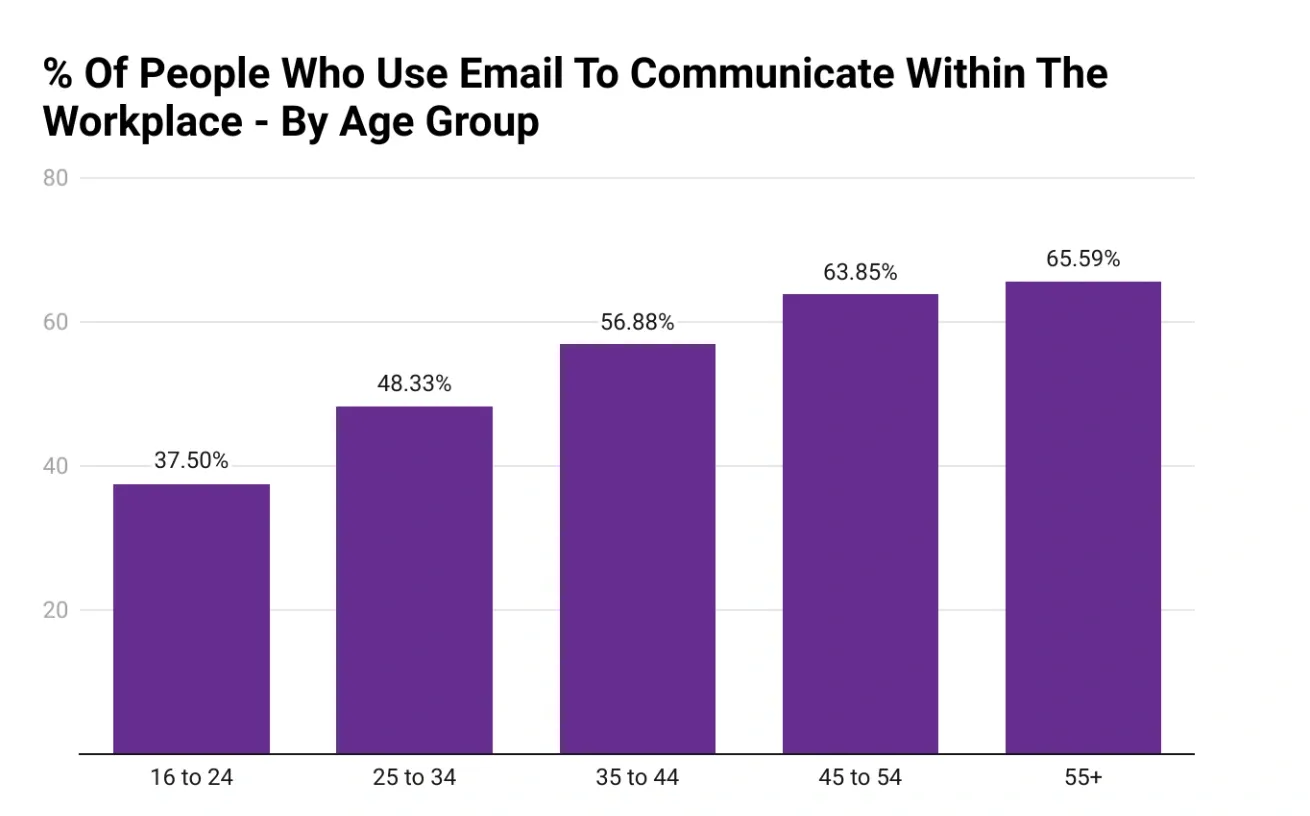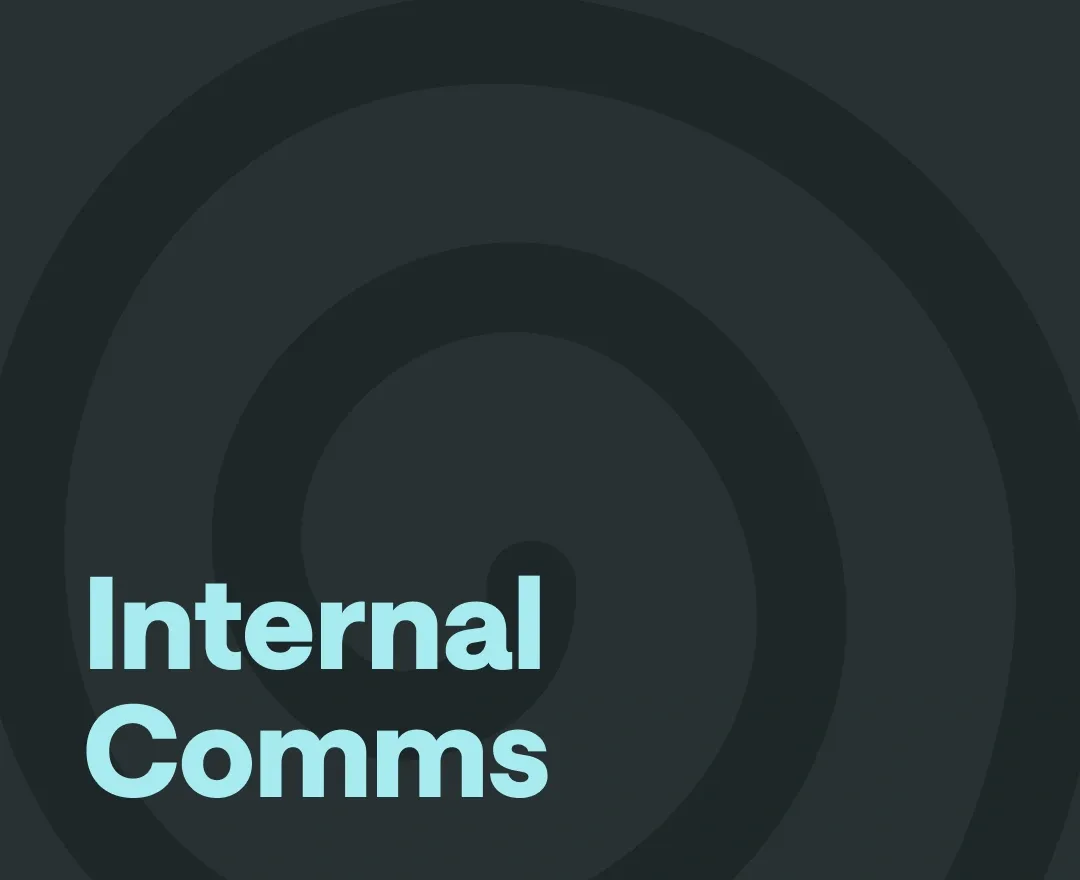Workplaces thrive on clear communication, yet it’s surprising how often things fall through the cracks. You send an email, employees miss it. They send an update, and you’re the last to know. Before you know it, deadlines are missed, people are frustrated, and you’re wondering if you all work for the same company.
Unfortunately, this is a common issue in many workplaces, and its effects go beyond just inconvenience. Research shows that poor communication accounts for 70% of corporate errors, costing businesses time, money, and employee morale.
The good news is this is something you can fix with a well-thought-out internal communications strategy.
Ready to create an internal communication plan that works for your team? Let’s get started.
What is an internal communication strategy?
An internal communication strategy is a game plan for how information flows within your company. Simply put, it’s the structure, tools, and methods you use to ensure that everyone in your organization has the right information at the right time.
Check this out:

Effective internal communications can benefit your organization in various ways, as shown in the report above.
7 steps to develop a strong internal communications strategy in your company
Creating a solid internal communications strategy requires careful planning, clear goals, and an understanding of what works for your organization. These seven steps will help you build a clear, effective communication framework.
1. Assess current communication practices
Before you can improve anything, you need to understand where things are going wrong.
Start by looking at your company's existing internal communications tools, i.e., emails, meetings, chat platforms, podcasts, and project management tools. Are these tools being used effectively? Are employees engaged, or do they feel overwhelmed by too many messages scattered across too many channels?
A recent study by Axios HQ revealed significant differences between employee preferences and leadership communication practices.

According to the results, all-hands or department meetings (36%) were the most preferred method by employees, followed by text messages and newsletters. Business leaders, however, tend to rely more on ad-hoc emails and chat/IM tools.
This discrepancy highlights the need for alignment between employee preferences and leadership practices to improve communication effectiveness.
2. Define objectives for your internal communications strategy
Once you’ve assessed where you’re at, it’s time to think about where you want to go. What do you want your communication efforts to accomplish, and how does that tie into your business goals?
For instance, if enhancing employee engagement is a priority, your goal could be: To increase participation in company-wide meetings from 55% to 70% within three months by implementing personalized reminders.
Setting SMART (specific, measurable, achievable, relevant, and time-bound) internal communication goals like these helps ensure your internal communication plans have clear indicators of success.
3. Identify your target audiences
Not everyone in your company needs the same information, and getting that right is key to smooth communication.
Figure out who the key groups are in your company. The leadership team might want big-picture updates, while the customer service folks need the nitty-gritty details to handle customer concerns.
Once you’ve identified these groups, think about how often they need to hear from you and what kind of info they need.
For example, your senior management may only need strategic highlights once a week. But your frontline employees might need to hear from you in real-time to stay aligned. Getting this balance right ensures everyone gets the info they need without being bombarded with too much (or too little).
You may want to create separate distribution lists to target the different groups within your organization. This prevents unnecessary information overload and makes sure each employee only receives the updates they need to do their job.
4. Select appropriate communication channels
The right communication channel can totally change the game.
Does your team rely on email for everything, or are they more engaged when using solutions for enterprise voice communications or chat platforms like Slack or Microsoft Teams? You must choose channels that fit the type of communication you’re trying to send.
For example, if you need to send out a quick update to the whole company, a mass email through your internal newsletter software might be the way to go. But if you're coordinating with smaller teams on specific projects, a project management tool or direct messaging may be more efficient.
Also, ensure the internal communication platforms you choose can integrate with your CRM.
The importance of CRM becomes evident here. CRM has tons of data that can help give your team more context during their interactions. These platforms not only allow you to send, receive, and track key messages but also let you add notes, organize conversations, and seamlessly connect various departments.
5. Tailor messages for different audiences
If you send one message to everyone, some people might miss the point, while others tune out completely. A smart approach is to create employee segments to ensure each group receives information that resonates with them.
Here’s how you can organize employee segments:
By department
- HR team: Receives detailed updates through email or newsletters.
- Sales team: Values quick, actionable updates through chat or direct messages.
- Marketing team: Requires comprehensive reports with data insights.
- Tech team: Prefers concise action items delivered through project management tools.
You can also create segments based on geographic location if your organization covers a big area.
Another technique is to create segments by project. So you might have employees from different departments working on the same project. You can even include external service providers in these lists. For example, some members of your marketing department could be on the same list as a SaaS SEO agency and a paid media company you might be working with. This makes it easier for everyone to share and get relevant updates related to the project.
You can also get creative with formats. If you have a younger workforce, why not try internal podcasts? They're flexible, engaging, and perfect for employees who prefer listening on the go over reading long emails.
6. Establish feedback mechanisms
If you’re only sending messages and not getting anything back, you’re missing out on some key insights. Feedback is your way of making sure that what you're sending out is actually working and helping people do their jobs.
The best way to get feedback is to make it easy and accessible. This can be as simple as a quick survey after a big company update or regular check-ins during team meetings. You could also set up a dedicated feedback channel (like a Slack thread or a shared document) where people can drop suggestions or voice concerns.
Make sure to listen and act on the feedback you receive. If your team says they’re overwhelmed with too many emails, or they can’t find important updates, take it seriously. Adjust your strategy based on what you’re hearing, and let your team know you’re making changes because of their input.
7. Measure the success of your internal communications strategy
A strategy is only as good as its results. Once you’ve implemented your internal communications plan for a few weeks, step back and check whether you’re hitting any of the goals you set.
If your initial goal was to increase response times, take a look at how quickly emails are being opened and how fast people are replying to messages. If you were aiming to improve team collaboration, check how often cross-departmental meetings or chats are happening.
Look for tangible metrics that show whether your comms strategy is delivering the results you need. The key is to keep monitoring and adjusting.
Best practices for improving internal communication in your company
You’ve got the framework in place, but now, let’s talk about the little tweaks and best practices that can take your internal communications initiatives to the next level.
1. Set clear communication goals
Don’t just share info for the sake of it. Make sure everyone knows why they’re receiving it and what action they need to take.
Therefore, set clear communication goals and make sure they’re communicated across the organization. Your internal communications team might also want to include other departments in the goal-setting process so they can share ownership.
2. Hold regular team meetings
Emails and Slack messages are great, but there’s no substitute for face-to-face (or virtual) meetings. Regular check-ins give everyone a chance to catch up, share ideas, and clear up any confusion.
Keep these meetings short and focused, but make them a non-negotiable part of your communication routine.
3. Use various communication channels
While email remains the most common form of communication in the workplace, it's important to use different channels depending on factors like preference, age, and the type of information.

The image above shows the preference for email across different age groups, and it’s clear that older generations primarily prefer email. Younger workers lean more toward instant messaging platforms and other digital internal communication tools.
4. Encourage open, honest communication
Your team should feel comfortable speaking up, whether it’s a concern, an idea, or feedback. Build a company culture where honesty is welcomed, and people will be more engaged and proactive in sharing important info.
6. Implement feedback loops
The best communication strategies are always evolving, and feedback is what helps you keep improving. Set up systems where employees can give feedback regularly, whether it’s through surveys, suggestion boxes, or informal check-ins.
Final Thoughts
Building a solid internal communication strategy is about ensuring your team stays aligned, engaged, and informed in ways that help drive your company’s goals. Follow the steps we've covered above to create a communication system that truly works for your team.
Remember, when your team is well-informed, engaged, and aligned, everything else (from project deadlines to employee morale) falls into place. So take action, stay adaptable, and watch how effective communication can transform your company’s productivity and culture.
To raise the quality of your internal content, try using Podcastle. From quick audio briefings to polished training material, it helps you communicate clearly and professionally by using AI tools to automatically enhance the quality of audio and video footage in just a click.








